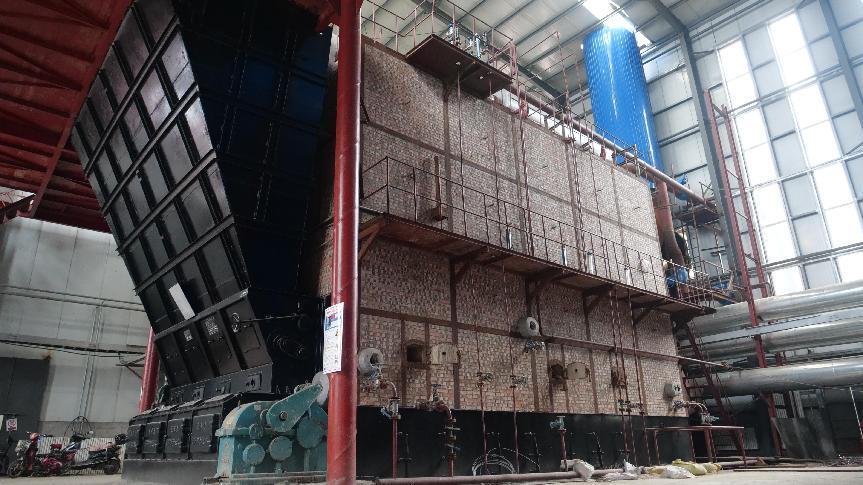
Oct . 21, 2024 10:51 Back to list
Guide to Installing a Hot Water Boiler Efficiently and Safely
How to Install a Hot Water Boiler A Comprehensive Guide
Installing a hot water boiler can seem daunting, but with the right guidance and tools, it can be accomplished successfully. A hot water boiler is a crucial element of home heating systems, providing warmth and hot water for various needs. Whether you're replacing an old unit or installing a new one, this guide will help you understand the necessary steps, tools, and safety precautions needed for a successful installation.
Step 1 Gather Tools and Materials
Before beginning the installation process, gather all the necessary tools and materials. You'll need
- A new hot water boiler - Pipes and fittings - A wrench set - Screwdrivers (flathead and Phillips) - Level - Tape measure - Pipe insulation - Safety gear (gloves, goggles)
Make sure to choose a boiler that meets the heating and hot water requirements of your home. Consult with a professional if you're unsure about the right size or type.
Step 2 Prepare the Installation Area
Select a suitable location for your boiler. It should be accessible for maintenance and not obstruct any exits or windows. Ensure the area is well-ventilated to allow proper airflow, as gas boilers require combustion air.
Clear the area of any debris or items that may hinder the installation. Make sure there's a grounded electrical outlet nearby if your boiler requires electrical power.
Step 3 Shut Off Utilities
Before starting any work, shut off the power supply and gas line to prevent accidents. If your boiler is connected to an existing system, drain the old unit completely. Use a hose to drain the water into a bucket or a floor drain.
Step 4 Remove the Old Boiler (If applicable)
If you're replacing an old boiler, it's time to remove it. Disconnect all the pipes, noting where each one connects for easier installation of the new unit. Carefully lift the boiler out of its place, and ensure that you dispose of it according to local regulations.
Step 5 Install the New Boiler
1. Position the Boiler Place the new boiler in the chosen location. Use a level to ensure it is installed straight.
how to install a hot water boiler

2. Connect the Pipes Use the existing pipes or the new ones provided with your boiler. Connect the supply and return pipes as per the manufacturer's instructions. Make sure to use proper fittings and secure them tightly to avoid leaks.
3. Gas Connection If you are using a gas boiler, connect the gas line. It is critical to follow local codes and regulations for gas connections. If you’re not experienced in this area, consider hiring a licensed professional for this step to ensure safety.
4. Water Connection Connect the cold water inlet and the hot water outlet to the appropriate pipes. If you haven't done so already, install any additional valves and fittings per the manufacturer’s specifications.
5. Electrical Connection Connect the electrical wiring as per the manufacturer's instructions. Ensure that all electrical connections are secure, and again, if this step seems challenging, don’t hesitate to hire an electrician.
Step 6 Fill the System
After all connections are made, it’s time to fill the system with water. Open the water supply valve and allow the boiler to fill. Check for any leaks as the system fills. If you find leaks, turn off the water supply and re-tighten affected connections.
Step 7 Bleed the Radiators
Once the system is filled, and there are no leaks, bleed the radiators to remove any trapped air. Locate the bleed valves at the top of each radiator. Use a radiator key to open the valve slightly until water begins to flow out.
Step 8 Test the System
Turn on the power supply and gas. Set the thermostat to a comfortable temperature and allow the boiler to run. Monitor the system for a short period to ensure everything operates smoothly. Listen for unusual noises and check for leaks.
Safety Precautions
Remember to always prioritize safety during the installation process. If at any point you feel unsure, consult a professional plumber or heating contractor. Proper installation not only ensures efficient operation but also prolongs the life of your boiler.
Conclusion
Installing a hot water boiler may require some effort, but by following these steps and being aware of safety precautions, you can successfully set up your new heating system. With your boiler installed, you can enjoy a warm home and reliable hot water for years to come. Always refer to your specific boiler's manual for detailed instructions and recommendations tailored to the model you've chosen.
-
High-Efficiency Commercial Oil Fired Steam Boiler for Industry
NewsJul.30,2025
-
High-Efficiency Biomass Fired Thermal Oil Boiler Solutions
NewsJul.30,2025
-
High Efficiency Gas Fired Thermal Oil Boiler for Industrial Heating
NewsJul.29,2025
-
High-Efficiency Gas Fired Hot Water Boiler for Sale – Reliable & Affordable
NewsJul.29,2025
-
High Efficiency Biomass Fired Hot Water Boiler for Industrial and Commercial Use
NewsJul.29,2025
-
High-Efficiency Biomass Fired Hot Water Boiler for Industrial Use
NewsJul.28,2025
Related PRODUCTS






















